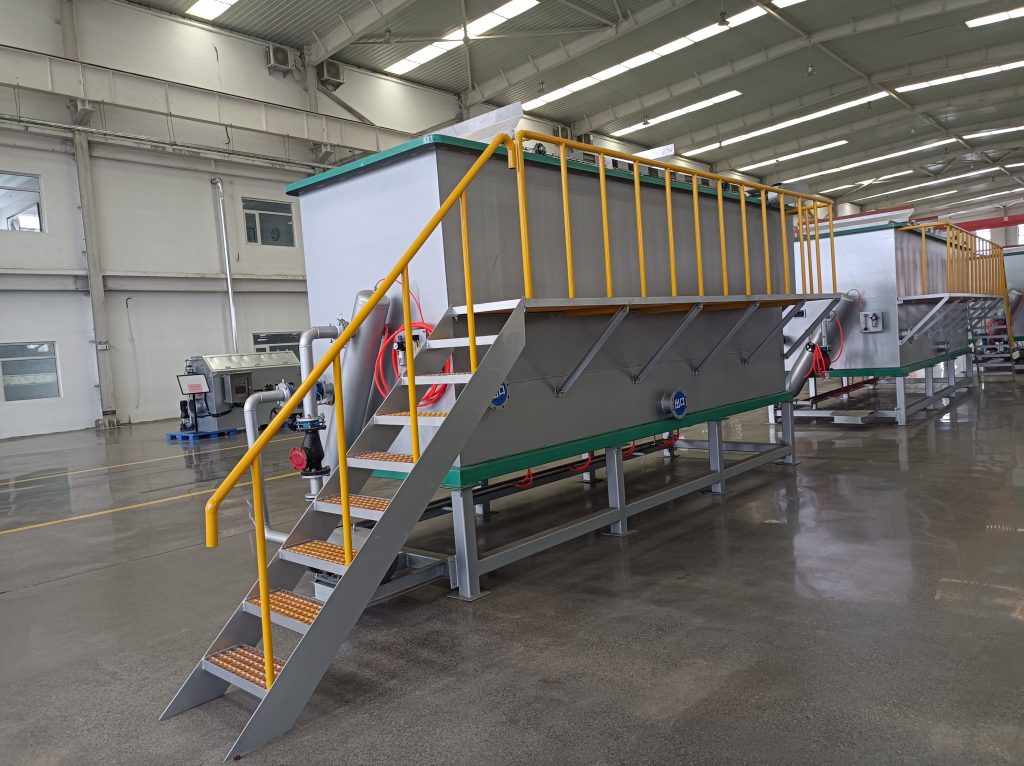What is electrolytic air floatation?
The so-called electrolytic air flotation method is a method of air flotation water treatment. During the electrolysis process, under the action of a direct current electric field, tiny bubbles of hydrogen and oxygen are generated at the cathode and anode respectively, which have a chemical redox effect on the pollutants in the wastewater, and can make the floc or oil adhere to the bubbles and float to the liquid surface is removed. It is mainly used for industrial wastewater treatment, but it is difficult to use in large-scale production due to the large power consumption, complicated operation and management, and high operating cost.

The air flotation method forms a water-air-particle three-phase mixed system by forming highly dispersed tiny bubbles in water and adhering to solid or liquid particles in the wastewater. After the particles adhere to the bubbles, they form flocs with an apparent density less than water. When it rises to the water surface, the scum layer formed can be scraped off, thus realizing the process of separating water and impurities. As a water treatment process, air flotation has been widely used in the treatment of various industrial wastewater and urban domestic sewage. It can be used as a single main technology for the treatment of oily wastewater in petrochemical and machinery manufacturing, and it can be used as a A pretreatment technology to remove suspended substances such as colloids that are difficult to remove by precipitation in wastewater to improve the subsequent treatment performance of wastewater.
Traditional air flotation methods include pressurized dissolved air flotation, aerated air flotation, and electrolytic air flotation. The most commonly used one is pressurized dissolved air flotation. The electrolytic air flotation method uses electrolysis to generate the tiny bubbles required for air flotation, which adhere to the suspended matter and colloidal particles in the sewage to float up, and make them reach the liquid surface and be scraped off. The microbubbles produced by the electrolysis air flotation method are smaller than those produced by dissolved air flotation and aerated air flotation, the air flotation treatment efficiency is high, the operating conditions are easy to control, and it is safe and reliable. However, the traditional electrolytic air flotation method uses soluble electrodes such as iron and aluminum, and the electrode materials are prone to corrosion and wear and need to be replaced frequently, which increases operating costs.
The electrolytic air flotation wastewater treatment device includes a main cavity and a control device electrically connected to the main cavity; the main cavity has a water inlet area, a reaction area, a scum area, and a water outlet area; the water inlet area has Water inlet channel; There is a baffle between the water inlet zone and the reaction zone and separated by the baffle, there is a gap between the baffle and the bottom of the reaction zone, the gap is formed Water passage; The reaction zone is provided with a graphite electrode plate group for electrolysis, and the reaction zone is provided with a slag scraping device for scraping the upper scum; the scum zone is separated from the reaction zone Is arranged to collect the scum generated above the reaction zone; the water outlet zone is separated from the reaction zone, the water outlet zone and the reaction zone are connected through a drainage channel, and the water outlet zone has a water outlet channel.
